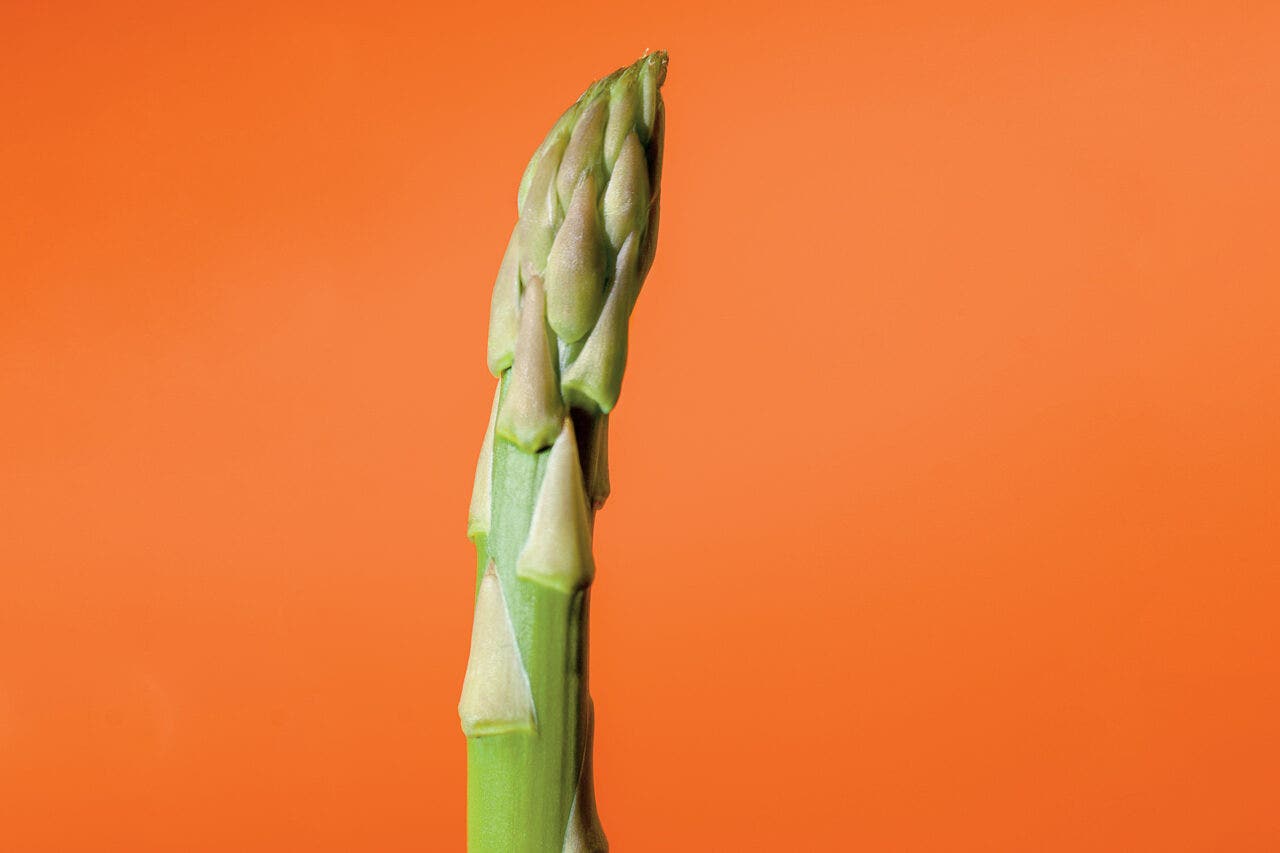Come spring, asparagus takes center stage in restaurant menus and produce markets. It’s especially beloved in Germany, Austria and Alsace, where the arrival of these tasty spears is hotly anticipated—special menus featuring twists on classic tastes are created in their honor. Freshness is tantamount, so be sure to eat asparagus the day you buy it. Grown without exposure to sunlight, some stalks stay white, while those bathed in sunshine synthesize chlorophyll and go green.
Fun Facts About Asparagus
- A particularly thick-stemmed cultivar of asparagus is called Rambo.
- Green and white aren’t the only color options: There’s also purple asparagus, which turns green when cooked.
- Fresh asparagus spears make a squeaky sound when rubbed against each other.
- The oldest known depiction of asparagus appears on a Pompeii mural that dates back to 10 B.C.
- If allowed to grow, asparagus shoots form bushy stems with feathery foliage.
- Asparagus has enzymes said to fight hangovers.
Pair It
Asparagus is often touted as a tricky match with wine, but these sommeliers have it covered: For asparagus served in a cold salad with vinaigrette, Serge Dubs of Auberge de l’Ill in Alsace suggests dry Muscat. Andreas Weber, who works at the Deidesheimer Hof in Deidesheim, Germany, proposes dry Silvaner. The delicate aromatics of both of these wines complement the salad’s freshness.
For cooked dishes with mild flavors like white asparagus with ham, Weber looks to Weissburgunder (Pinot Blanc), as does Gerhard Retter, an Austrian transplant at the trendy Cordobar in Berlin. This choice is robust enough to deal with the ham’s fat without overwhelming the asparagus. Retter suggests a slightly oaked Weissburgunder with a touch of smokiness if asparagus is paired with stronger flavors like smoked meat or fish.
If you serve asparagus with a rich sauce like mayonnaise or Hollandaise, opt for a richer wine. Both Dubs and Weber suggest Riesling, as it can cut through the creaminess.
Published: March 26, 2018















